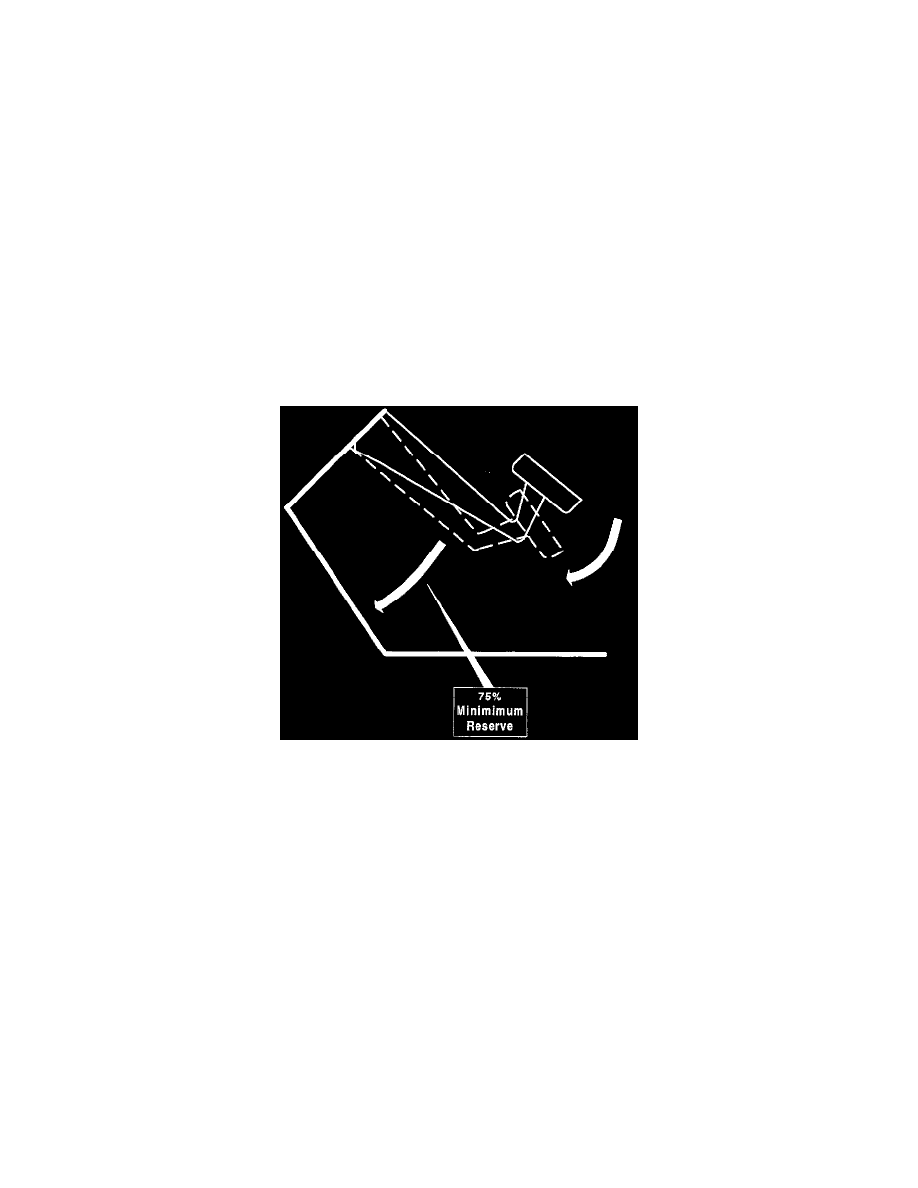F 250 4WD Pickup V8-7.3L DSL Turbo VIN K (1994)

Functional Checks
NOTE: Always bleed the entire brake system and verify the rear brakes are properly adjusted prior to diagnosing a master cylinder as
defective. For additional information see Master Cylinder / Brake Pedal Relationship.
Check Related Systems
-
Check for proper brake booster operation
1. With the engine "OFF", depress and release the brake pedal 4-5 times (this bleeds off the vacuum reserve in the booster).
2. Depress the brake pedal firmly and start the engine.
If the pedal goes down slightly the brake booster is assisting in brake operation.
If the pedal does not go down slightly the brake booster is not assisting in brake operation and should be diagnosed for problems.
-
Check and adjust rear brakes.
-
Check all brake lines and brake assemblies for leakage.
Repair all deficiencies with related systems prior to diagnosing the master cylinder as defective.
Check Brake Pedal Travel (Non-Antilock Brake Systems Only)
-
Fully depress the brake pedal and check for the following:
-
The pedal should have a 75% reserve.
Pedal Reserve Checks
-
The pedal should be firm and not leak down.
Replace the master cylinder if all of the following conditions exist:
-
The brake pedal is not firm with a 75% reserve and -
-
There were no problems with any of the related systems and -
-
The entire brake system has been bled and -
-
The rear brakes are properly adjusted.
